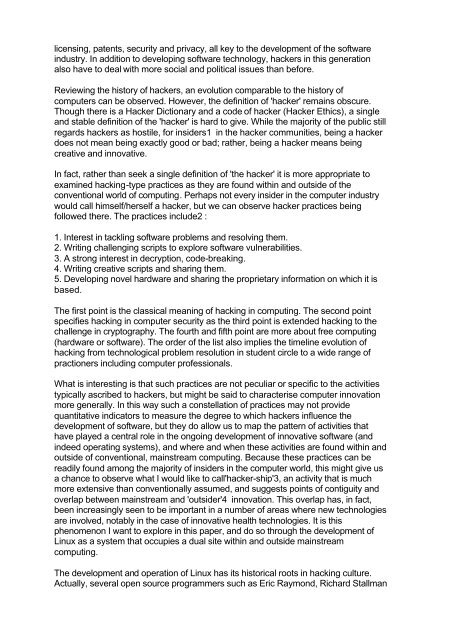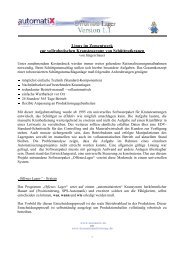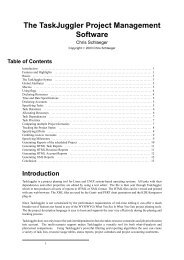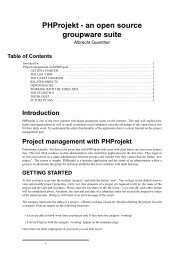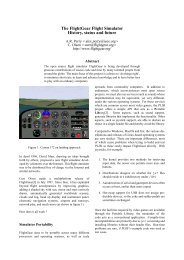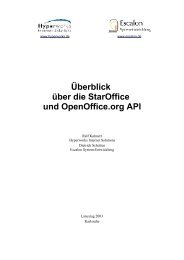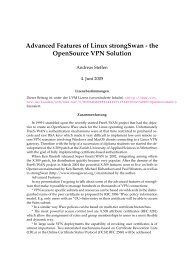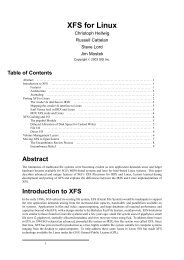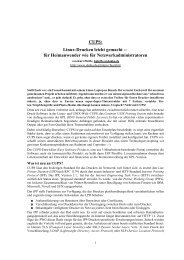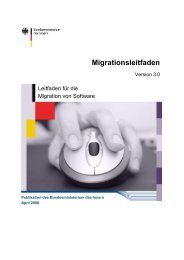Pan-hacker culture and unconventional software innovation ...
Pan-hacker culture and unconventional software innovation ...
Pan-hacker culture and unconventional software innovation ...
You also want an ePaper? Increase the reach of your titles
YUMPU automatically turns print PDFs into web optimized ePapers that Google loves.
licensing, patents, security <strong>and</strong> privacy, all key to the development of the <strong>software</strong><br />
industry. In addition to developing <strong>software</strong> technology, <strong>hacker</strong>s in this generation<br />
also have to deal with more social <strong>and</strong> political issues than before.<br />
Reviewing the history of <strong>hacker</strong>s, an evolution comparable to the history of<br />
computers can be observed. However, the definition of '<strong>hacker</strong>' remains obscure.<br />
Though there is a Hacker Dictionary <strong>and</strong> a code of <strong>hacker</strong> (Hacker Ethics), a single<br />
<strong>and</strong> stable definition of the '<strong>hacker</strong>' is hard to give. While the majority of the public still<br />
regards <strong>hacker</strong>s as hostile, for insiders1 in the <strong>hacker</strong> communities, being a <strong>hacker</strong><br />
does not mean being exactly good or bad; rather, being a <strong>hacker</strong> means being<br />
creative <strong>and</strong> innovative.<br />
In fact, rather than seek a single definition of 'the <strong>hacker</strong>' it is more appropriate to<br />
examined hacking-type practices as they are found within <strong>and</strong> outside of the<br />
conventional world of computing. Perhaps not every insider in the computer industry<br />
would call himself/herself a <strong>hacker</strong>, but we can observe <strong>hacker</strong> practices being<br />
followed there. The practices include2 :<br />
1. Interest in tackling <strong>software</strong> problems <strong>and</strong> resolving them.<br />
2. Writing challenging scripts to explore <strong>software</strong> vulnerabilities.<br />
3. A strong interest in decryption, code-breaking.<br />
4. Writing creative scripts <strong>and</strong> sharing them.<br />
5. Developing novel hardware <strong>and</strong> sharing the proprietary information on which it is<br />
based.<br />
The first point is the classical meaning of hacking in computing. The second point<br />
specifies hacking in computer security as the third point is extended hacking to the<br />
challenge in cryptography. The fourth <strong>and</strong> fifth point are more about free computing<br />
(hardware or <strong>software</strong>). The order of the list also implies the timeline evolution of<br />
hacking from technological problem resolution in student circle to a wide range of<br />
practioners including computer professionals.<br />
What is interesting is that such practices are not peculiar or specific to the activities<br />
typically ascribed to <strong>hacker</strong>s, but might be said to characterise computer <strong>innovation</strong><br />
more generally. In this way such a constellation of practices may not provide<br />
quantitative indicators to measure the degree to which <strong>hacker</strong>s influence the<br />
development of <strong>software</strong>, but they do allow us to map the pattern of activities that<br />
have played a central role in the ongoing development of innovative <strong>software</strong> (<strong>and</strong><br />
indeed operating systems), <strong>and</strong> where <strong>and</strong> when these activities are found within <strong>and</strong><br />
outside of conventional, mainstream computing. Because these practices can be<br />
readily found among the majority of insiders in the computer world, this might give us<br />
a chance to observe what I would like to call'<strong>hacker</strong>-ship'3, an activity that is much<br />
more extensive than conventionally assumed, <strong>and</strong> suggests points of contiguity <strong>and</strong><br />
overlap between mainstream <strong>and</strong> 'outsider'4 <strong>innovation</strong>. This overlap has, in fact,<br />
been increasingly seen to be important in a number of areas where new technologies<br />
are involved, notably in the case of innovative health technologies. It is this<br />
phenomenon I want to explore in this paper, <strong>and</strong> do so through the development of<br />
Linux as a system that occupies a dual site within <strong>and</strong> outside mainstream<br />
computing.<br />
The development <strong>and</strong> operation of Linux has its historical roots in hacking <strong>culture</strong>.<br />
Actually, several open source programmers such as Eric Raymond, Richard Stallman


